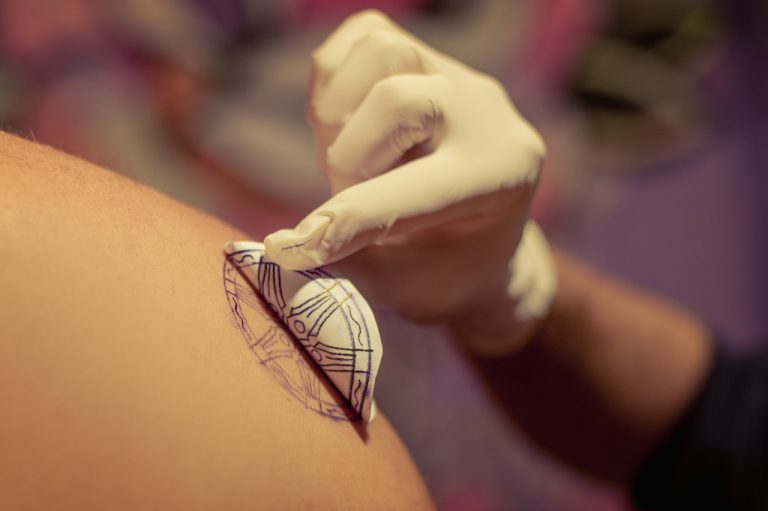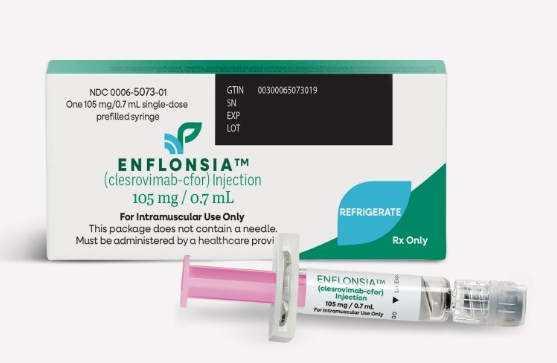Story Highlights
- A soldier was vaccinated for smallpox and developed a local and systemic vaccine virus smallpox infection after tattooing over his injection site.
- Despite global eradication of wild-type smallpox, fears over its potential use as a biological weapon have prompted vaccination of military personnel and first responders.
- Similar processes for administration of the smallpox vaccination and injection of tattoo ink provide a unique environment in tattooed skin that increases the risk for an adverse reaction to the vaccine, specifically smallpox vaccine strain virus infection.
A 21-year-old male soldier was injected with the smallpox vaccine as part of a vaccination program for soldiers on rotation to South Korea.1 Eight days later, he was sent for medical examination when it was noted that, contrary to regulations, he did not have a bandage over his injection site and was repeatedly scratching the area. During the medical visit, he told authorities that four days after his vaccination he’d had a large arm tattoo “touched up” directly over the vaccine site. Although the soldier did not report feeling ill at the time of the medical exam, he did admit to significant itching, and small flesh-colored bumps were noted throughout the tattooed area. The soldier was placed in isolation for further follow-up.
Within a few days the vesicles had progressed to lesions typical of smallpox, along with fever, chills and muscle aches. Given the dual risk factors of tattoo needle exposure and increased potential for exposure to methicillin-resistant staphylococcus aureus (MRSA) in the military, he was treated with antibiotics as a precaution. Follow-up was continued for 23 days post-tattooing. The soldier ultimately recovered but was left with patches of discolored, hypo-pigmented scarring.
Vaccination Against Smallpox Despite Eradication
The 33rd World Health Assembly officially reported that smallpox (variola) had been eradicated globally as of May 8, 1980.2 Agreeing that the variola virus, which causes smallpox, should be studied further, scientists and public health officials sanctioned the retention of stocks of variola for research purposes. Under the control of the World Health Organization (WHO), there are currently only two sites worldwide where the variola virus is stored and handled: the Centers for Disease Control and Prevention (CDC) in Atlanta, Georgia, and the State Research Center of Virology and Biotechnology in Koltsovo, Russia.3 An explosion at the Russian laboratory in September of 2019 reignited ongoing arguments over whether the stored smallpox virus samples should be destroyed.4
Smallpox vaccinations are no longer recommended for the general population because the vaccine contains the live attenuated hyprid vaccinia virus that can cause a high rate of serious complications, including generalized and progressive vaccinia, myopericarditis, eczema vaccinatum, post-vaccinal encephalitis and death.5 6 However, after Sept. 9, 2011 (9/11), concerns over the potential use of weaponized smallpox by terrorists as a biological weapon against the U.S. population prompted the George W. Bush administration to launch the National Smallpox Vaccination Program, primarily for military service members and first responders. The rationale was that soldiers and health care workers would be “most likely to be targeted and exposed in terror attacks domestically or abroad.”
Since 2002, more than 2.4 million military service members have been given smallpox vaccinations.7
Delivery Method for Smallpox Vaccine Increases Risk
The smallpox vaccine is made using the live attenuated vaccinia virus, which is similar to smallpox but not as lethal. Nevertheless, because the vaccine uses a live virus and not one that has been inactivated (killed), there are precautionary guidelines in place, such as covering the vaccine site, both to minimize risks for the vaccinated individual and to avoid spreading vaccine strain virus infection to others.8
Administration of the smallpox vaccine has changed very little since the early days of vaccination in the late 18th century. Bifurcated, or two-pronged, needles are used to repeatedly pierce the skin to introduce the live virus. The procedure is similar to the process used in tattooing. Both tattoos and vaccines have been shown to affect the immune response at the injection site, which can result in opportunistic infections, benign or malignant tumors, and immune system reactions.9
It also has been recognized that the live vaccinia virus is more readily able to spread among immunocompromised persons (including skin that has been altered by tattooing), increasing the risk of an adverse reaction. Recognizing the synergistic potential for complications associated with tattoos and vaccination, vaccine providers are cautioned to avoid tattooed skin in choosing a vaccination site.10
Since 2005, 13 cases of complications related to tattoos and smallpox vaccination have been reported to the national Vaccine Adverse Events Reporting System (VAERS). Less than one percent of vaccine reactions that occur in the U.S. are reported to VAERS,11 so the actual number of smallpox vaccine adverse events involving vaccine strain virus infections may be much higher.12 13
References:
1 Rempfer K. Soldier Contracted Smallpox Sister Virus After Tattooing His Vaccine Site. Army Times Mar. 6, 2020.
2 Centers for Disease Control and Prevention. History of Smallpox Aug. 30, 2016.
3 Ibid.
4 Kritz F. Russian Lab Explosion Raises Question: Should Smallpox Virus Be Kept Or Destroyed? NPR Sept. 19, 2019.
5 World Health Organization. Frequently Asked Questions And Answers On Smallpox. June 28, 2016.
6 Jacob BL, Langland J et al. Vaccinia Virus Vaccines: Past, Present and Future. Antiviral Res 2009; 84(1): 1-13.
7 Carius BM et al. Smallpox Autoinoculation Via Tattoo in a Soldier. Oxford Academic July 31, 2018.
8 CDC. Smallpox: Vaccine Basics. July 12, 2017.
9 CDHuynh TN. Tattoo And Vaccination Sites: Possible Nest For Opportunistic Infections, Tumors, And Dysimmune Reactions. Science Direct Sept.-Oct. 2014.
10 See Footnote 7.
11 Harvard Pilgrim Health Care, Inc. Electronic System for Public Health Vaccine Adverse Event Reporting System. AHRQ 2011.
12 See Footnote 1.
13 See Footnote 7.













4 Responses
No matter what! Have to have a strong immune system! That’s it! Yes, against vaccines! But no matter your choice, must take care of your health!
Contrary to common belief, smallpox was not eradicated because of vaccination. Only 10% of the world’s population was ever vaccinated, and yet the disease disappeared. So much for vaccination for “herd immunity”.
In addition, the smallpox vaccine had a history of horrible side effects. Apparently, politics takes prescedence over health. Not much has changed since 2001, has it?
They also use our soldiers to test the newest vaccines and give them so many at a time that many cannot handle it.
we must come up with a federal law allowing people to decline vaccines without penalty.